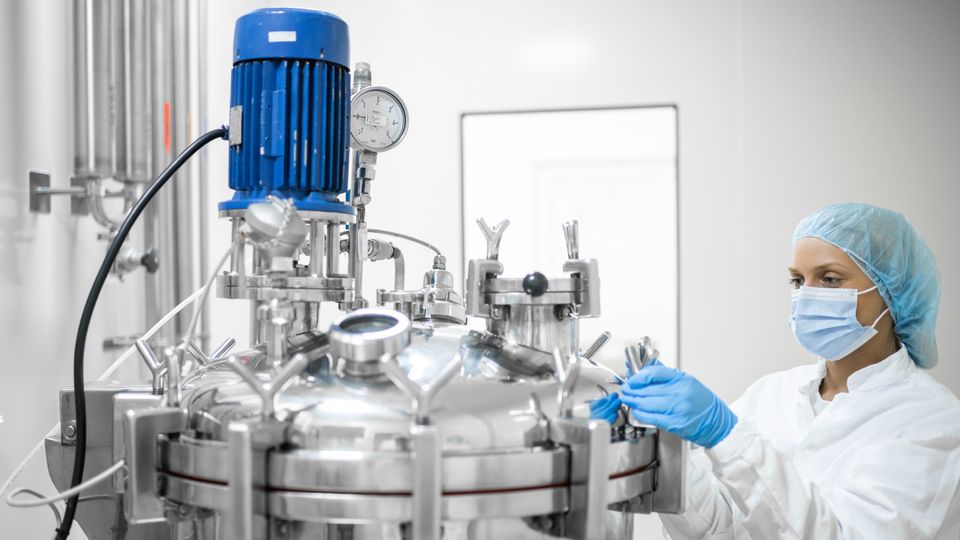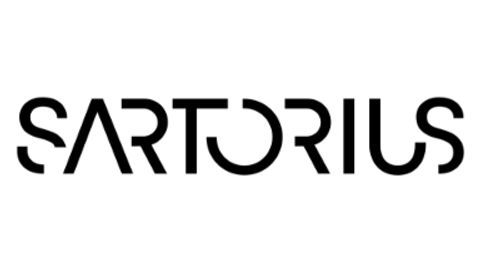New Advances in the Bioprocess Pipeline
Listicle
Published: September 13, 2023
|
Aron Gyorgypal, PhD
Dr. Aron Gyorgypal is a postdoctoral research fellow at Harvard Medical School and Massachusetts General Hospital in Boston, Massachusetts. Following the completion of his PhD, he joined the Anthony Lab at Harvard Medical School and Massachusetts General Hospital in the immunology department, where he leverages his engineering skillset to deepen the understanding of immunological disorders and develop therapeutic solutions against such conditions.
Learn about our editorial policies

Credit: iStock
The ever-advancing bioprocess pipeline aims to optimize the manufacturing of biologics, using living organisms or their components. Addressing challenges such as high costs, time-consuming assays and processing complexities is a key part of this process.
Technological innovation allows manufacturers to tackle these issues head on and helps to streamline and enhance production of the desired product.
Download this listicle to learn more about:
- High-throughput upstream process screening technology
- Establishing multi-attribute monitoring
- Forecasting multistep-ahead profiles using data-driven models
Listicle
1
New Advances in the
Bioprocess Pipeline
Aron Gyorgypal, PhD
The bioprocess landscape is an ever-advancing industry looking to optimize the manufacturing of biologics.
Of key interest is addressing the challenges of high costs, time-consuming assays and processing
complexities. These challenges are tackled with technological innovation meant to streamline and optimize
the production pipeline.
Here we delve into groundbreaking advancements throughout the bioprocess pipeline that are poised to
advance bioprocessing.
Figure 1: Bioprocess scheme showing the overall bioprocess scheme of the upstream and downstream unit operations,
including early clone clean selection and the use of model and control along the product pipeline. Credit: Gyorgypal, A. doi:
10.7282/t3-1c02-k359.
Clone selection
Fed-batch
reactor
Medium/feed
Harvest
Product
capture
Filtration
Product
polishing
Biologic
Process model
and control
NEW ADVANCES IN THE BIOPROCESS PIPELINE 2
Listicle
High-throughput upstream process screening technology
Early biologic production is known to come with high costs as it takes time to evaluate an optimized
process, including the medium, feed, reactor conditions and purification methodologies. A critical need is
to speed up analytical times while scaling down cell culture systems, to help better assess cell lines for
key attributes while decreasing the costs of goods manufactured. This will ultimately lead to accelerated
production of innovators and biosimilars. Both liquid handlers and microfluidics coupled with analytical
equipment such as high-performance liquid chromatography (HPLC) and mass spectrometry (MS) have
been showcased as effective for achieving this goal.
A successful cell line has high productivity. Cell clones that produce high titers allow for the production of
drugs in a higher quantity but in less time. While new technologies enable the engineering of high titer
cell clones, there is still a need to screen these clones quickly.1 The current paradigm for titer analysis
depends on chromatographic approaches which, even with the newest ultra-high-performance liquid
chromatography (UHPLC) models, will take minutes to analyze one cell line. However, a recent innovation
by D’Amico et al. used microfluidics coupled with electrospray ionization MS to improve analysis time
tremendously from 3 minutes to 25 seconds per sample.2 This is achieved using a multiplate Protein
A-based cleaning coupled with microdroplet entrainment and subsequent analysis by native MS. The
authors also imply that this technology can measure key product quality attributes. Unsurprisingly, microfluidics
has recently gained prevalence as a technology to aid in high throughput automation, with both
MS and HPLC techniques as an avenue towards process automation and away from the need of manual
in-process testing.3
A common product attribute that needs to be monitored in biopharmaceutical manufacturing is protein
aggregation, which is known to influence a product's safety and efficacy. During early-stage development,
identifying aggregation in scale-down cell culture systems can be tedious, as the small sample volumes
make aggregate detection challenging. Scientists at the University of Sheffield looked to overcome this
hurdle by developing an automated small-scale analytical platform workflow, combining purification and
aggregation analysis of protein biopharmaceuticals expressed in 96 deep well plate cell cultures.4 Their
workflow utilized a liquid handler equipped with a protein-A PhyTip column for purification and a size-exclusion
chromatography (SEC) column for aggregate monitoring. The data was then analyzed, and cultures
were ranked by their aggregation levels. This high-throughput method, allowing up to 384 clones to be
screened in 32 hours, enables high aggregation phenotypes to be eliminated from clone selection early on
in cell line screening and can be used for both monoclonal as well as bispecific antibodies alike. Technology
such as this one showcases the utility of liquid handlers for high-throughput automated screening.
Downstream purification – New ligands for multimodal
chromatography
Downstream product processing accounts for over half of the production cost for monoclonal antibodies,
and significant research is devoted to developing compact and affordable purification processes. Scientists
are looking to innovate new chromatographic technologies using novel ligands capable of improved
separation for higher-throughput operation. Within separation science, attention is put on multimodal
ligands that combine multiple techniques, such as hydrophobic, hydrogen binding and electrostatic
integrations, that work orthogonally or complementary to affinity or conventional hydrophobic and ion
exchange chromatography.5 The use of multimodal chromatography effectively removes process-related
impurities, such as host cell protein (HCP), DNA, aggregates and protein fragments.
Scientists at the North Carolina State University developed a multimodal salt tolerant cation exchange
(CEX) membrane, which is the first of its kind based on nonwoven fabrics to be published and used for
product capture and polishing of biologics.6
NEW ADVANCES IN THE BIOPROCESS PIPELINE 3
Listicle
This membrane was produced by coupling 2-mercaptopyridine-3-carboxylic acid (MPCA) to a polybutylene
terephthalate (PBT) nonwoven fabric, modified by UV grafting of glycidyl methacrylate (polyGMA). The
membrane achieved higher biologic binding and capacity versus commercial CEX multimodal resins and
may be an effective alternative to current commercial resin columns. Future efforts by the team look to
expand on the success of this technology to bring more purification applications, such as a low-cost Protein-
A alternative and peptide-based resins for HCP depletion. Ultimately, technology such as this looks
to disrupt the current downstream process purification paradigm to allow for low-cost, high-throughput
purification of biologics.
Establishing multi-attribute monitoring
The complexity of biologics processing comes from the multitude of heterogenous post-translational
modifications that can alter protein-based therapeutics' efficacy and safety. Using multi-attribute monitoring
(MAM), a liquid chromatography-mass spectrometry (LC-MS)-based method, allows for direct characterization
and monitoring of numerous product quality attributes at the amino acid level. Simultaneously
monitoring multiple attributes on the peptide level makes MAM a more informative and streamlined
approach than typical LC and MS methodologies. A recent publication by Millán-Martín et al. described
a comprehensive MAM workflow for biologic characterization and current good manufacturing practices
(cGMP).7 This work aims to standardize the protocols used for MAM to help with implementation and is
the first protocol to establish the MAM methodology, which has not been available in the literature prior.
The overview of the workflow explains the three major parts of setting up a MAM protocol:
1. Sample digest: A proteolytic digest of the protein to produce peptides.
2. High-resolution accurate MS (HRAM-MS) of the peptide: Discovery phase (phase 1) to enable confident
identification of peaks to produce a peptide library for the biologic. Monitoring phase (phase
2), where full MS acquisition is carried out for the predefined product quality attributes (PQAs) and
critical quality attributes (CQAs) based on the phase 1 peptide library.
3. Data processing and analysis: Data processing for phase 1 looks to evaluate the sequence coverage
and assess the PQAs/CQAs present for the biologic. In phase 2, during targeted monitoring, the predicted
PQAs and CQAs are monitored, and detection of new peaks are screened/investigated for the
presence of either product or process-related impurities that may be present during bioprocessing.
This MAM method relies on a bottom-up approach. Other technologies using MAM seek to do native MS to
allow for PQA/CQA analysis on the intact protein level, which can give a different level of information. Work
by Bhattacharya et al. explains the use of native-MS MAM to characterize antibody titer, size, charge and
glycoform heterogeneity in cell culture supernatant.8 The workflow was achieved by 2D-LC-MS in which the
first dimension coupled Protein A in series with size exclusion chromatography, and the second dimension
was cation exchange chromatography. The glycosylation was then characterized with quadrupole time of
flight mass spectrometry (qTOF-MS). Academic research has seen the quick adoption of the use of MAM
workflows, which will help speed up workflows in industry applications once validated for use.
Forecasting multistep-ahead profiles using data-driven models
Process models and simulations are increasingly used to better understand, optimize and predict different
aspects of a bioprocess. More dense datasets are now available for bioprocesses with new advancements
in process analytical technology (PAT) and artificial intelligence (AI). By integrating AI-based
data-driven models with an upstream bioprocess, the outcome can be forecasted with better prediction.
NEW ADVANCES IN THE BIOPROCESS PIPELINE 4
Listicle
Outputs, such as the cell viability, product titer and metabolite concentrations, such as glucose, can be
predicted and better optimized for the process. These optimized models can also be implemented with a
real-time digital twin.
Recently, researchers at Sungkyunkwan University published a practical guideline for selecting optimal
combinations of data-driven elements to predict Chinese hamster ovary cell culture’s process profile.9
This was achieved through a systematic framework for collectively evaluating various AI algorithms, forecasting
strategies and model inputs. The utility of this framework was then demonstrated on an array of
cell culture datasets under various conditions, selecting the most predictive algorithm for said condition.
The choice of model elements that are considered will impact both computation load and accuracy of the
model, the researchers found. The suitability of the model will depend on data availability, the complexity
of the modeled culture conditions and model input variables. This framework should be used as a rational
and practical guide on what should be considered to build the best forecasting data-driven model.
Sponsored by
References:
1. Tihanyi B, Nyitray L. Recent advances in CHO cell line development for recombinant protein production. Drug Discov Today
Technol. 2020;38:25–34. doi: 10.1016/j.ddtec.2021.02.003
2. D’Amico CI, Robbins G, Po I, et al. Screening clones for monoclonal antibody production using droplet microfluidics
interfaced to electrospray ionization mass spectrometry. J Am Soc Mass Spectrom. 2023;34(6):1117–1124. doi: 10.1021/
jasms.3c00055
3. Tiwold EK, Gyorgypal A, Chundawat SPS. Recent advances in biologic therapeutic N-glycan preparation techniques
and analytical methods for facilitating biomanufacturing automation. J Pharm Sci. 2023;112(6):1485–1491. doi: 10.1016/j.
xphs.2023.01.012
4. Lambiase G, Klottrup-Rees K, Lovelady C, et al. An automated, low volume, and high-throughput analytical platform for
aggregate quantitation from cell culture media. J Chromatogr A. 2023;1691:463809. doi: 10.1016/j.chroma.2023.463809
5. Zhang L, Parasnavis S, Li Z, Chen J, Cramer S. Mechanistic modeling based process development for monoclonal antibody
monomer-aggregate separations in multimodal cation exchange chromatography. J Chromatogr A. 2019;1602:317–
325. doi: 10.1016/j.chroma.2019.05.056
6. Fan J, Sripada SA, Pham DN, et al. Purification of a monoclonal antibody using a novel high-capacity multimodal cation
exchange nonwoven membrane. Sep Purif Technol. 2023;317:123920. doi: 10.1016/j.seppur.2023.123920
7. Millán-Martín S, Jakes C, Carillo S, Rogers R, Ren D, Bones J. Comprehensive multi-attribute method workflow for
biotherapeutic characterization and current good manufacturing practices testing. Nat Protoc. 2023;18(4):1056–1089. doi:
10.1038/s41596-022-00785-5
8. Bhattacharya S, Joshi S, Rathore AS. A native multi-dimensional monitoring workflow for at-line characterization of
mAb titer, size, charge, and glycoform heterogeneities in cell culture supernatant. J Chromatogr A. 2023;1696:463983. doi:
10.1016/j.chroma.2023.463983
9. Park S-Y, Kim S-J, Park C-H, Kim J, Lee D-Y. Data-driven prediction models for forecasting multistep ahead profiles of
mammalian cell culture toward bioprocess digital twins. Biotechnol Bioeng. 2023;120:2494–2508. doi: 10.1002/bit.28405
Sponsored by

Download the List for FREE Now!
Information you provide will be shared with the sponsors for this content. Technology Networks or its sponsors may contact you to offer you content or products based on your interest in this topic. You may opt-out at any time.


